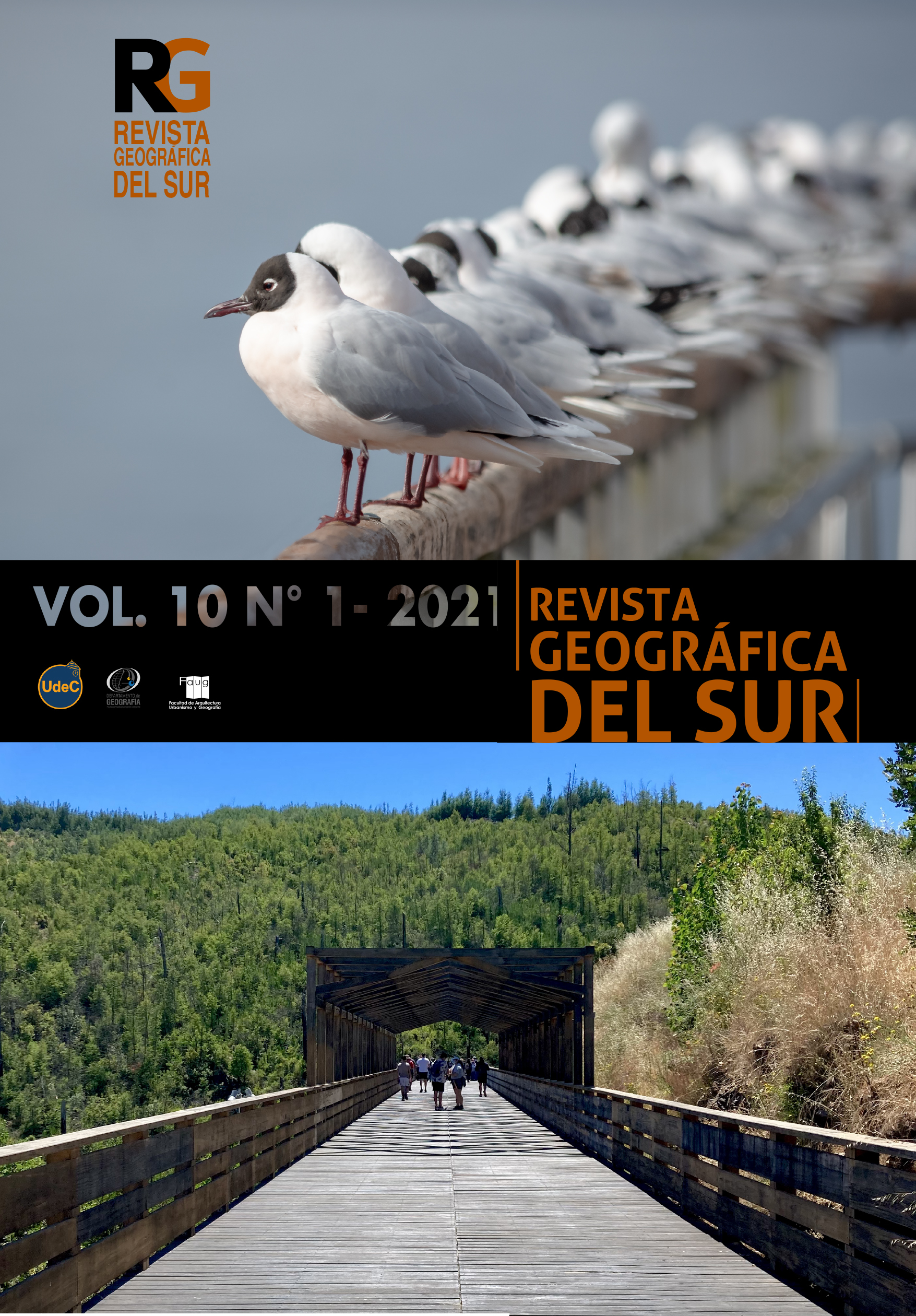EFFECTS OF THE 27F EARTHQUAKE AND TSUNAMI ON METROPOLITAN TERRITORIAL PLANNING; LESSONS LEARNED AND NEW APPROACHES: THE CASE OF THE CITY OF TALCAHUANO, CHILE
DOI:
https://doi.org/10.29393/GS10-4ETNA10004Keywords:
Territorial planning, socio-natural disasters, metropolitan areasAbstract
This article analyzes the changes that have occurred in the metropolitan territorial planning instruments in the surroundings of Talcahuano city hall and the Metropolitan Area of Concepción (AMC) as a consequence of the 2010 earthquake and tsunami. It is framed in a context of changes in planning, in relation to the inclusion of new aspects linked to sustainability, participation or resilience in which Talcahuano’s city hall has taken the post-earthquake reconstruction as the axis of local development, positioning itself as a reference both nationally and internationally. To refer to this process, the article uses a qualitative methodology based on literature review, analysis of planning instruments and in-depth interviews with key actors. The results indicate an evolution of these instruments as a consequence of natural events and even a diffusion of the principles emanating from these new instruments to the rest of the MCA and the country from local planning.
Downloads
Published
How to Cite
Issue
Section
Copyright (c) 2021 Universidad de Concepción

This work is licensed under a Creative Commons Attribution 4.0 International License.







